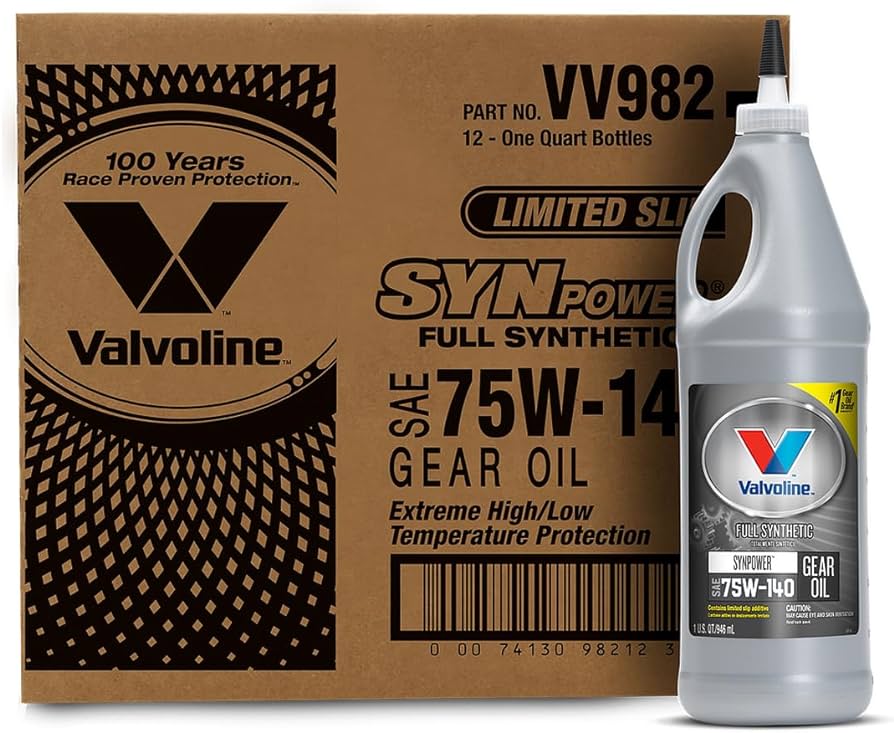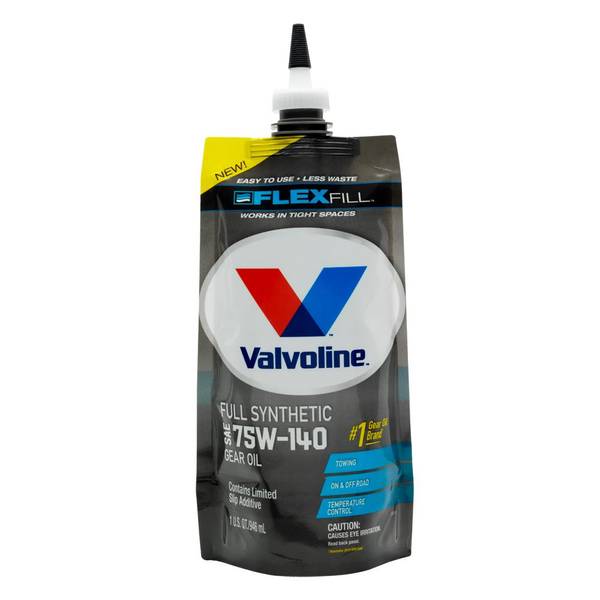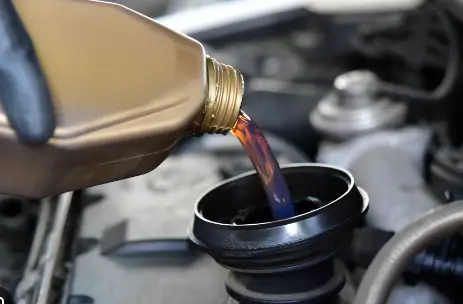Mixing 75W90 and 75W140 is not recommended due to their different viscosities and additives. It can result in ineffective lubrication and potential damage to the components.
However, it is important to consult the manufacturer’s recommendations or a qualified professional for specific guidance based on your vehicle’s requirements and conditions. Have you ever wondered whether you can mix 75W90 and 75W140 gear oils? While it may seem tempting to blend different viscosities to achieve a desired outcome, mixing these two types of gear oils is not advisable.
This article will explore why mixing them can lead to lubrication problems and possible component damage. It is crucial to understand the importance of using the recommended gear oil for your vehicle and consult relevant sources or professionals to avoid any potential issues.
Understanding Gear Oil Viscosity Ratings
Understanding gear oil viscosity ratings is crucial when it comes to mixing different grades like 75W90 and 75W140. Each rating indicates the oil’s ability to flow at different temperatures, ensuring proper lubrication for various gear systems. Mixing these grades can affect performance, so it’s essential to consult the manufacturer’s recommendations before doing so.
Definition Of Gear Oil Viscosity Ratings
Gear oil viscosity ratings refer to the measure of a fluid’s resistance to flow. These ratings are represented by a combination of numbers, such as 75W90 and 75W140, where the first number indicates the oil’s viscosity at lower temperatures, and the second number represents its viscosity at higher temperatures.
More specifically, the ‘W’ stands for winter and the number before it signifies the oil’s viscosity characteristics at low temperatures. The lower the number, the better the fluid flows in cold conditions. The higher number indicates the oil’s viscosity at higher temperatures, with a higher number representing a thicker fluid.
Importance Of Matching Gear Oil Viscosity
Matching gear oil viscosity is crucial for optimal performance and protection of your vehicle’s gears. Consistently using the right viscosity oil ensures proper lubrication, which reduces friction and wear between the gear components.
Using the wrong viscosity oil can lead to several issues. For instance, if a lighter viscosity oil is used in high load applications, it may not provide enough lubrication, causing excessive wear and potentially leading to gear damage. Conversely, using a heavier viscosity oil in low-temperature situations may result in poor fluid flow, leading to inadequate lubrication and increased friction.
To simplify the decision-making process, it’s important to consult your vehicle’s manufacturer’s recommendations regarding the appropriate gear oil viscosity. Following their guidelines ensures that you are using the correct oil to maintain optimal gear performance and longevity.
Factors To Consider When Mixing 75w90 And 75w140
Mixing different gear oil viscosities can be a cause for concern among car enthusiasts and mechanics alike. While it may seem convenient to combine oils to achieve a desired viscosity level, there are certain factors that need to be considered before doing so. In this article, we will explore the compatibility of different gear oil viscosities, the effects of mixing viscosities, and potential risks and consequences.
Compatibility Of Different Gear Oil Viscosities
Before mixing 75W90 and 75W140 gear oils, it is important to understand their compatibility. Both viscosities are commonly used in automotive applications, with 75W90 being the more common choice due to its versatility and wide temperature range.

On the other hand, 75W140 is typically used in heavy-duty applications or high-performance vehicles that require additional protection.
Despite their differences, these two viscosities are compatible and can be mixed together. However, it is important to note that the resulting viscosity will be somewhere in between the two original oils. For example, if you mix equal parts of 75W90 and 75W140, the resulting viscosity will be closer to 75W115.
Effects Of Mixing Viscosities
Mixing different gear oil viscosities can have certain effects on your vehicle’s performance and protection. The most notable effect is a change in the overall viscosity of the oil. Oil viscosity plays a crucial role in lubrication, as it determines the oil’s ability to flow and provide adequate protection to the gears.
By mixing 75W90 and 75W140, you can alter the oil’s viscosity to meet specific requirements. This can be beneficial in certain scenarios, such as adjusting the viscosity for extreme temperatures or high-stress situations. However, it is important to consult your vehicle’s manufacturer or a trusted mechanic to ensure that the mixed viscosity is suitable for your specific vehicle and usage.
Potential Risks And Consequences
While mixing 75W90 and 75W140 can offer some benefits, it is important to be aware of potential risks and consequences. One of the main risks is the potential for reduced gear protection. Since the resulting viscosity will be different from either of the original oils, it may not provide optimal performance and protection for your specific gears and transmission.
Additionally, mixing different viscosities may lead to increased wear and tear on the gears, as the oil properties may not be optimized for the specific gear design and operating conditions. This can potentially result in gear damage, increased noise, and decreased efficiency.
It is crucial to take into account the manufacturer’s recommendations and specifications when deciding to mix gear oil viscosities. If in doubt, it is always recommended to consult a professional mechanic who can provide expert advice and guidance based on your vehicle’s specific requirements.
Recommendations For Mixing 75w90 And 75w140
Mixing 75W90 and 75W140 gear oils is not recommended unless specified by the manufacturer. The different viscosities can affect the overall performance and lubrication of the gears, potentially causing damage. It is best to consult the manufacturer’s guidelines for the specific application.
Manufacturer Guidelines And Recommendations
When it comes to mixing gear oil viscosities like 75W90 and 75W140, it is important to follow the manufacturer’s guidelines and recommendations. Each brand may have specific instructions on whether or not these two viscosities can be mixed, and if so, at what ratio. Consulting the manufacturer’s documentation or contacting their customer support can provide you with the accurate information you need.
Expert Opinions On Mixing Gear Oil Viscosities
Experts in the field of automotive lubricants have differing opinions when it comes to mixing gear oil viscosities. Some believe that mixing different viscosities can lead to a compromised performance of the gear oil, while others argue that under certain circumstances it can be done without causing any significant issues. However, it is important to note that these opinions may vary depending on the specific application and the type of gear system being used.
How To Determine The Appropriate Ratio When Mixing
Determining the appropriate ratio when mixing 75W90 and 75W140 gear oils is crucial to ensuring optimal performance. To determine the ratio, you need to consider factors such as the recommendations provided by the manufacturer and the specific requirements of your application.
In most cases, mixing gear oils of different viscosities should be done in equal proportions to maintain the overall viscosity balance. However, it is always advisable to consult the manufacturer or seek expert advice to determine the appropriate ratio for your particular situation.
Summary
When it comes to mixing gear oil viscosities like 75W90 and 75W140, it is essential to follow the manufacturer’s guidelines and recommendations. Consulting the manufacturer’s documentation or contacting their customer support can provide you with accurate information on whether or not these two viscosities can be mixed and at what ratio.
Expert opinions on mixing gear oil viscosities may vary, so it is crucial to consider the specific requirements of your application. Determining the appropriate ratio should be based on the manufacturer’s recommendations and expert advice to ensure optimal performance.
Proper Procedure For Mixing 75w90 And 75w140
Step-by-step Instructions For Safely Mixing Gear Oil
If you find yourself need to mix 75W90 and 75W140 gear oil, it is crucial to follow the proper procedure to ensure optimal performance and avoid any damages. Here’s a step-by-step guide on how to safely mix these two types of gear oil:
- First, gather all the necessary tools and equipment for the process.
- Make sure you have a suitable container or bottle that is clean and free from any contaminants.
- Begin by pouring equal amounts of 75W90 and 75W140 gear oil into the container.
- Using a clean stir stick or funnel, thoroughly mix the two oils together. This will ensure proper blending.
- Once the oils are mixed well, perform a visual inspection to make sure there are no visible oil separation or clumps.
- If everything looks good, you can now use the mixed gear oil in your application.
- Dispose of any leftover or unused mixed oil properly according to local regulations.
- Remember to label the container with the type and ratio of the mixed gear oil for future reference.
Tools And Equipment Needed For The Process
To safely mix 75W90 and 75W140 gear oil, you will need the following tools and equipment:
- Clean container or bottle
- Stir stick or funnel
- Measuring tool to ensure equal amounts of gear oil
- Protective gloves
- Proper disposal container for any leftover or unused oil
Precautions To Take To Avoid Contamination Or Damage
Mixing gear oil requires some precautions to ensure there is no contamination or damage. Here are some important steps to follow:
- Always use clean tools, equipment, and containers to prevent any unwanted particles or contaminants from entering the oil mixture.
- Wear protective gloves to avoid skin contact with the gear oil.
- Do not mix different grades or types of gear oil unless specified by the manufacturer.
- Perform a visual inspection of the mixed oil to ensure there is no oil separation or clumps, as this can affect performance.
- Dispose of any leftover or unused mixed gear oil properly according to local regulations to avoid environmental damage.
Testing And Monitoring Mixed Gear Oil Performance
Mixing gear oils can sometimes be necessary, especially in situations where the recommended grade is not readily available. However, it is crucial to understand how mixed gear oil can affect the performance of your equipment. In this section, we will discuss how to assess the effectiveness of mixed gear oil, the importance of scheduled maintenance and fluid inspections, as well as the signs of potential issues or incompatibilities.
How To Assess The Effectiveness Of Mixed Gear Oil
When it comes to assessing the performance of mixed gear oil, routine testing and monitoring are essential. This ensures that the oil mixture is not compromising the overall efficiency and functionality of your machinery. Consider the following key factors during the assessment:
- Viscosity: Measure the viscosity of the mixed gear oil using appropriate equipment. This will help determine if the viscosity is within the acceptable range for your equipment.
- Film Strength: Evaluate the film strength of the mixed gear oil to assess its ability to provide proper lubrication and reduce wear. Low film strength could indicate a potential issue.
- Temperature Stability: Monitor the temperature stability of the mixed gear oil to ensure it can withstand the operating conditions without undergoing significant degradation.
- Friction Characteristics: Assess the friction characteristics of the mixed gear oil to verify that it is not causing excessive friction or wear on the gear surfaces.
Scheduled Maintenance And Fluid Inspections
Scheduled maintenance and fluid inspections are vital for ensuring the longevity and performance of your equipment when using mixed gear oil. Regularly following the manufacturer’s recommended maintenance schedule allows you to stay ahead of potential issues and prevent major problems. Here are some essential steps to include in your maintenance routine:
- Visual Inspection: Regularly inspect the gear oil for any signs of contamination, discoloration, or abnormal particle accumulation. This can indicate potential compatibility issues or other problems that require attention.
- Fluid Analysis: Conduct fluid analysis tests periodically to monitor the condition of the mixed gear oil. This helps identify any unusual changes in fluid properties, such as increased wear metals or decreased additives.
- Frequent Oil Changes: Consider more frequent oil changes when using mixed gear oil, as it may have a shorter lifespan compared to using a single specified grade. This helps maintain optimum performance and extends the equipment’s life.
Signs Of Potential Issues Or Incompatibilities
Being aware of the signs that indicate potential issues or incompatibilities with mixed gear oil is crucial to avoiding costly repairs and equipment downtime. Look out for the following signs:
- Excessive Noise: Unusual noises during operation, such as grinding or screeching, could indicate inadequate lubrication caused by an incompatible or ineffective gear oil mixture.
- Poor Gear Shifting: If you notice difficulty or irregularities in gear shifting, it could be a result of improper lubrication due to incompatible gear oil mixtures.
- Increased Gear Wear: Keep an eye on gear wear by regularly inspecting the gear teeth for signs of excessive wear or damage. Mixed gear oil that is not providing proper lubrication can accelerate gear wear and compromise performance.
- Increased Heat: Excessive heat generation in the gears can be an indication of insufficient lubrication. If you observe unusual temperature spikes, it is important to investigate for potential gear oil compatibility problems.
By regularly testing and monitoring the mixed gear oil performance, adhering to scheduled maintenance and implementing fluid inspections, as well as recognizing signs of potential issues or incompatibilities, you can ensure optimal equipment performance and prevent unnecessary damages and downtime. Conducting these assessments and taking appropriate actions will help mitigate risks and enhance the longevity of your machinery.

Credit: www.farmandfleet.com
Frequently Asked Questions Of Can You Mix 75w90 And 75w140
Can You Mix 75w90 And 75w140 Gear Oils Together?
Yes, you can mix 75W90 and 75W140 gear oils together. Both oils have similar viscosity ratings, meaning they can work well together. However, it is recommended to consult your vehicle’s manufacturer or a professional mechanic before mixing different gear oils, as certain vehicles have specific requirements.
What Will Happen If You Mix 75w90 And 75w140 Gear Oils?
Mixing 75W90 and 75W140 gear oils can result in a blended viscosity, providing better lubrication for certain applications. However, it’s important to note that mixing oils can alter their properties and affect performance. Always consult your vehicle’s manufacturer or a professional mechanic before mixing gear oils.
Can Mixing Different Gear Oils Damage Your Vehicle?
Mixing different gear oils can potentially damage your vehicle’s transmission or other components. It’s essential to check your vehicle’s owner manual or consult a professional mechanic for specific recommendations on which gear oils are compatible and safe to mix.
Conclusion
Mixing 75W90 and 75W140 oils is possible, but it is important to consider the specific needs of your vehicle. While it may be acceptable in certain situations, it is always advisable to consult your vehicle manufacturer or a professional mechanic for guidance.
Remember, using the correct viscosity oil is essential for optimal performance and to avoid potential damage to your vehicle’s engine and gearbox.


Leave a Reply